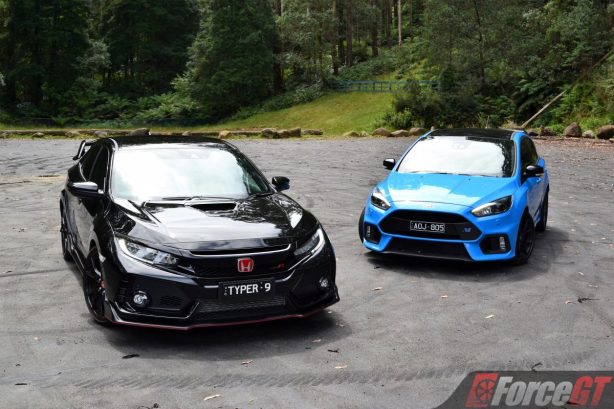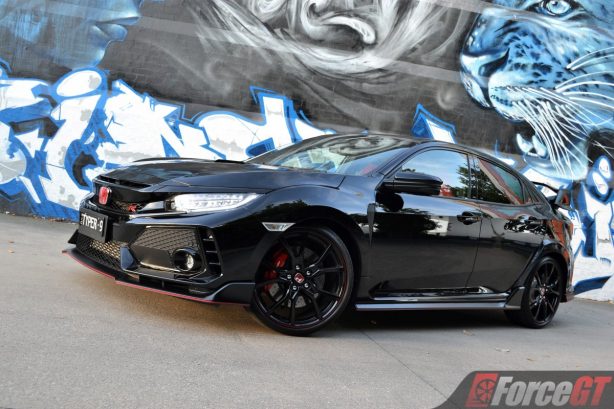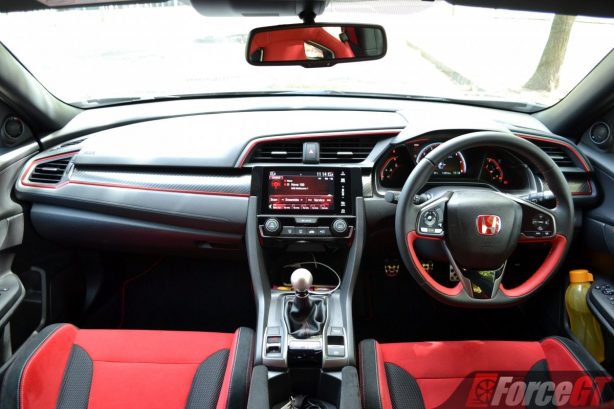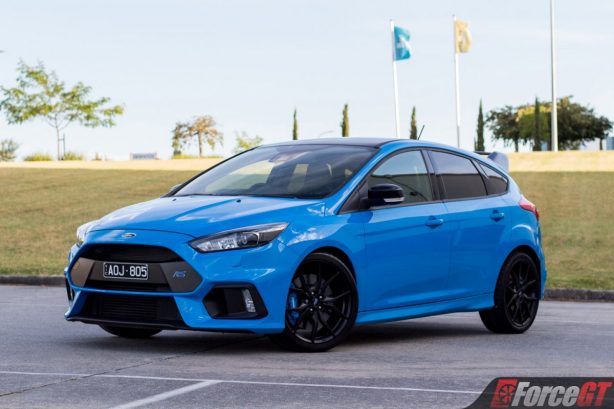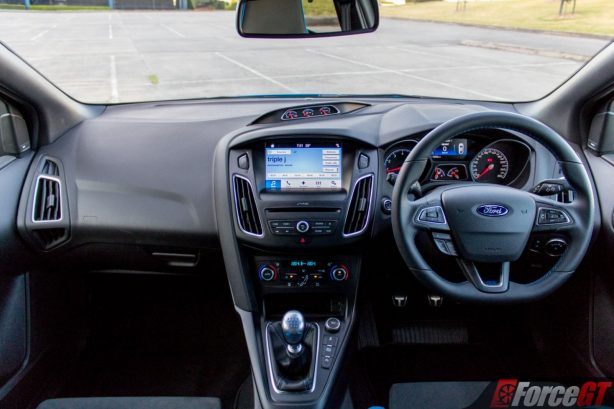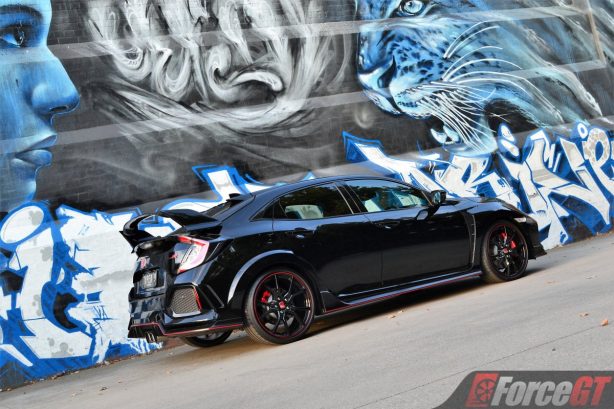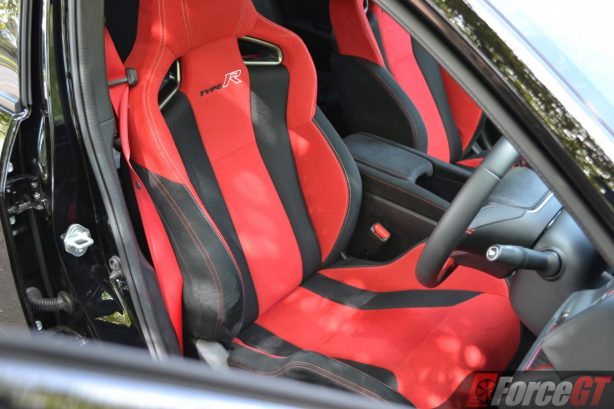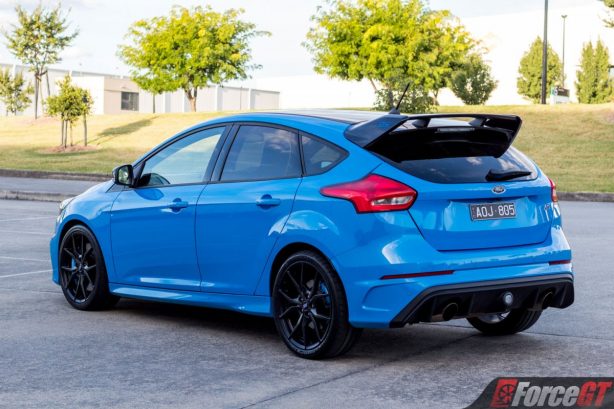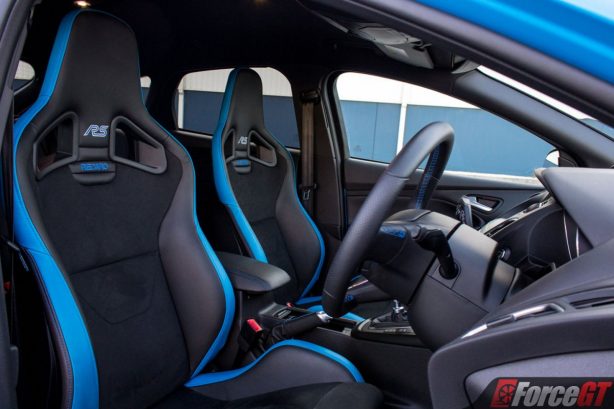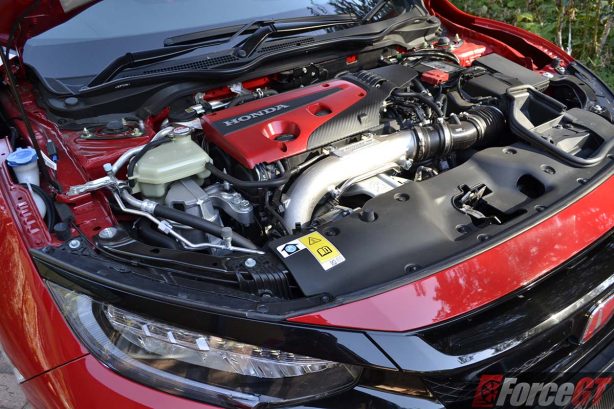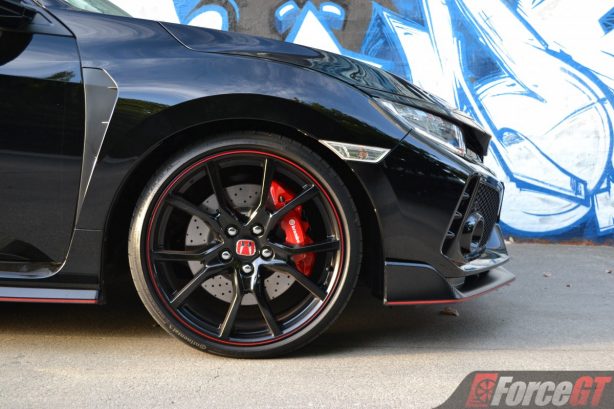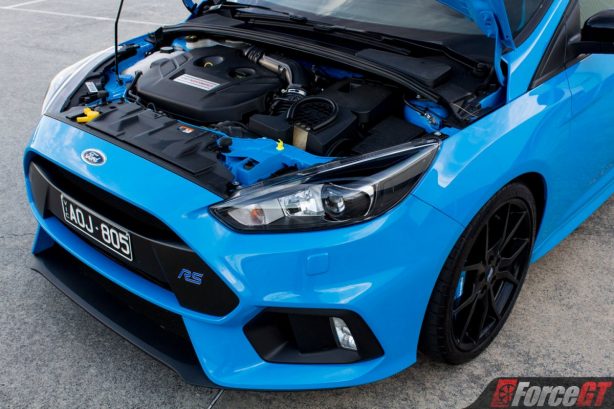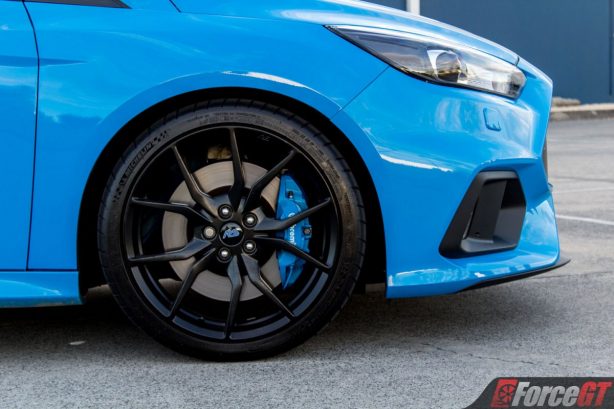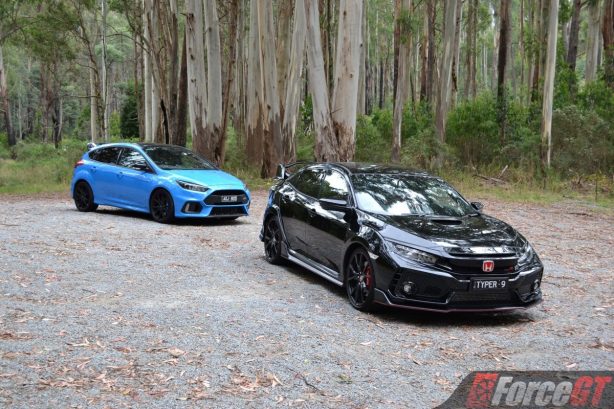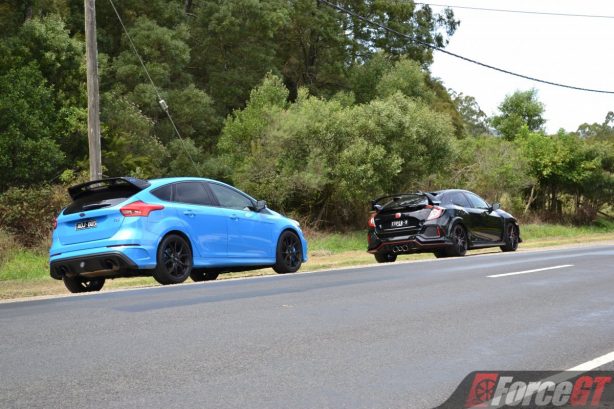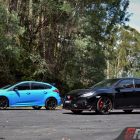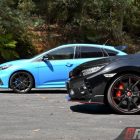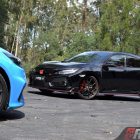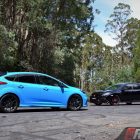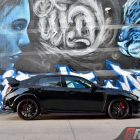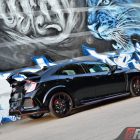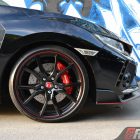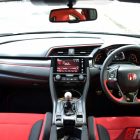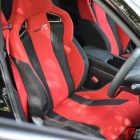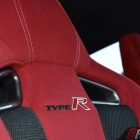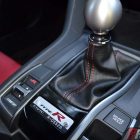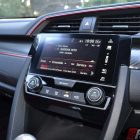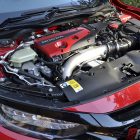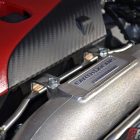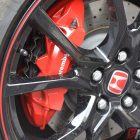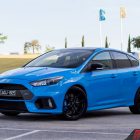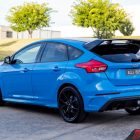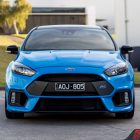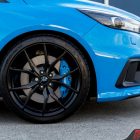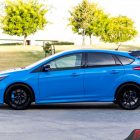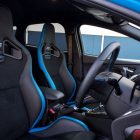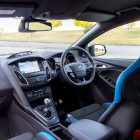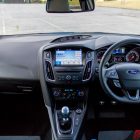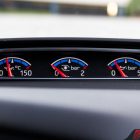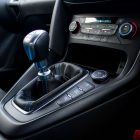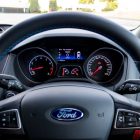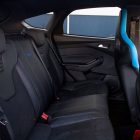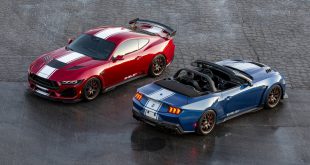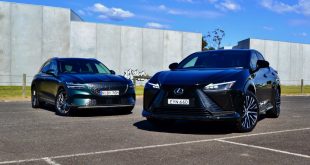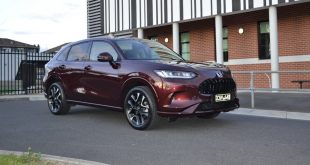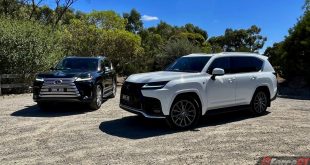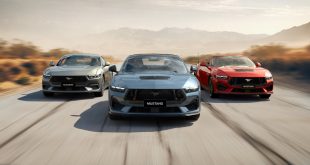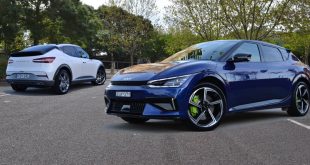The hot hatch market has never been so saturated. It stretches from the excellent Hyundai i30 N newcomer to the ballistic BMW M140i six-banger. If you have fifty big ones to blow on a go-fast toy, what a time to live. But at the pointy end of the segment sit two of the most hardcore players – the Honda Civic Type R and Ford Focus RS. We brought them together for a collision course. Which of these is the hot hatch king? Read on.
Price and Equipment
At $50,990 plus on-road costs ($51,990 from April 2018), the Civic Type R is the most expensive front-wheel drive hot hatch on sale today. It does, however, pack quite a lot of kit.
Australian delivered models are equipped with adaptive dampers with three driving modes, Brembo brakes all around, 20-inch Berlina black alloy wheels shod with 245/30R20 Continental SportContact 6 tyres and Honda Sensing safety suite which includes Adaptive Cruise Control and Autonomous Emergency Braking. There is also an adaptive dual-pinion electric power steering system with variable gear ratio and a helical limited-slip front differential.
For us, the highlight feature is without doubt the superbly comfortable and supportive sports seats. Trimmed in red hot suede-effect fabric to compliment the cabin’s red accent and contrast stitching, the in-house developed Type R specification seats are said to be the lightest ever.
The 7-inch colour touchscreen infotainment system supports Bluetooth, Apple CarPlay and Android Auto connectivity, but the lack of built-in satellite navigation is grim at this price point.
Identically priced as the Type R, the Focus RS brings huge bang for your buck with genuine all-wheel drive performance coupled with adaptive dampers and three driving modes including the insane “Drift” mode. It rolls on 19-inch wheels wrapped in 235/35 R19 Michelin Pilot Sport Cup 2 rubber and stops on massive four-piston 350mm Brembo front stoppers.
Inside, standout RS features include the binnacle gauges displaying turbo boost pressure, oil temperature and oil pressure, and the Recaro shell seats which are deeply bolstered providing excellent lateral support but waffle thin in cushion offering hardly any comfort.
On the safety front, the Focus RS matches that of the Civic Type R with cruise control (though non-adaptive) and Autonomous Emergency Braking. It’s also on par with the Honda in connectivity with Bluetooth, Apple CarPlay and Android Auto all included through a larger 8-inch display. The Ford does go a step further, however, with built-in satellite navigation. The thumping Sony Audio System with 9 speakers is also miles ahead of the Honda’s generic set up.
Winner: Ford Focus RS
Design and Versatility
The Civic Type R’s controversial styling is sure to divide opinions. Its blistered wheel arches, flamboyant body kit, triple tailpipes and towering rear wings are almost a caricature of the donor Civic hatch and makes even the aggressively styled Focus RS, nearly invisible. The Honda will grow on you, however, for its chiselled bodywork and wide stance look impressive in the flesh – almost like a compact Super GT racer. And in black like our test car, the Civic Type R really does look business without being over the top.
Inside, the Civic-derived interior is just as hot as the exterior with plenty of red stitching and anodised-red trim strips on the dash and doors. But nothing beats the pair of bright red sports seats and red seat belts which do really set the cabin alive. And the moment you lay hands on the beautifully machined sphere of aluminium alloy atop the short gearshift lever, you know you’re in something very special.
Sitting low and tight, the driving position is spot on and typical of a Honda, forward visibility is excellent. The rear bench is packaged with generous leg and headroom, but only sits two (as there is no middle seat belt). It’s a sports car, yes, but a seating capacity of four is one short of every single rival in the segment. And with practicality a major buying factor in this category, this could be a deal breaker for some.
It looks good, the Focus RS, in a German-Yankee kind of way. Okay, beefier side skirts and wider fenders would be better but the aggressive front bumper, prominent roof spoiler, deep rear diffuser and striking black 19-inch wheels spell out its performance credentials to wicked effect. Still, it looks rather boxy and restraint next to the Civic Type R and simply can’t match the Honda in road presence.
The Ford’s interior is sporty but again, less exciting than the Honda’s, certainly not as special. Compared to the latter’s popping red in black cabin, the Focus RS’ is a sea of grey only subtly punctuated with blue stitching on the seats, steering wheel and floor mats. That said, it does have splashes of RS logo around the cabin further to signify this isn’t your run-of-the-mill Focus.
Jumping out the the Type R and into the RS feels like climbing into an SUV. We just wished the Recaro’s in the Ford were lower. It’s certainly not a very sporty driving position but like the Honda, forward visibility is good allowing for precise vehicle placement.
As opposed to the 4-seat Honda, you can carry one more passenger in the Ford though rear legroom isn’t as spacious.
Winner: Honda Civic Type R
Performance and Handling
The Civic Type R’s turbocharged 2.0-litre four-cylinder engine smashes out 228kW at 6,500rpm and 400Nm at 2,500-4,500rpm, giving the Japanese hot hatch a power-to-weight ratio of 167.0W/kg – the highest amongst its peers and just a tickle more than the Focus RS’ 166.6W/kg.
With only two front driven wheels, the Type R’s official 0-100km/h dash is 5.7 seconds – almost a full second adrift of the RS’ 4.8 seconds, but it’s in rolling acceleration where the Honda has an edge over its all-wheel-drive rival. In gear, the way the lighter and more kilowatt per tonne Type R gathers speed is absolutely ferocious, which goes to explain why the Honda is able to quickly make up for lost time from its disadvantaged FWD standing start and come only 0.7 of a second behind the Ford in the quarter mile run, stopping the watch at 14.0 seconds.
Once off the line, the Type R’s beautifully balanced chassis comes into play, delivering superbly neutral handling that goes against the norm of front-wheel drive. With its drive mode set to Sport (save the +R for track as it’s too uncompromising for the road), you can throw the Type R around and it responds with pin-sharp turn-in and tight body control. Its ability to string apexes together is remarkably even more effortless than the all-paw RS.
It is capable of firing out of third-gear corners at incredible speeds and with very little torque steer as the limited slip-front differential generate a tremendous amount of grip, demonstrating the Type R’s delightful agility and chuckability.
Driven spiritedly, everything in the Type R feels right. The six-speed manual with auto rev-matching is the best in the business with its short throw, mechanical feel. The steering is precise and at just over two turns lock-to-lock, is quick, too. Its weighting in ‘Sport’ is near perfect and there is not a dull moment in its feedback from the road.
The Type R feels more approachable and progressive than the Ford, which inherently invites you to push further into its potential. However, like most front drivers, the car will understeer if you’re careless with the power. Yet, without doubt, the Civic Type R is the best front-wheel drive sports car to date.
The RS comfortably triumphs the Type R in the figures game with 257kW at 6,000rpm and 440Nm at 1,600-5,000rpm, unleashed from a 2.3-litre four-cylinder engine boasting a twin-scroll turbocharger. As if that’s not enough power, an additional 30Nm is available for up to 15 seconds on transient overboost during hard acceleration.
Managing all that is a Focus-first all-wheel drive system complete with torque vectoring that not only splits its torque front-to-rear, but also side-to-side. Unlike the Haldex system used in many of its AWD rivals which can only send up to 50% of torque to the rear wheels, the one in the RS is able to divert as much as 70% of torque to the rear axle, or in Drift Mode, to any one of the rear wheels. Like the Civic Type R, the Focus RS only comes in a six-speed manual.
On challenging back roads, the AWD system endows the RS with mightily impressive dynamics. Turn in is ultra sharp and the front end is so wonderfully locked down it feels almost like a rear-biased AWD car – the RS drives the front only at highway speeds when pointing straight. You can trail brake late into a corner – Ken Block style – and yet the car remains understeer-free and faithful to your intended line. With torque vectoring and biblical levels of grip, you get on the power much earlier than the Type R. The chubby mid range torque pulls it out of the bends much quicker, too.
But don’t think you can easily shake off the Type R in your rear view mirror, at least not in a tight course. The Honda’s alacrity, poise and balance means it will stay neck and neck with the Ford until the roads straighten up. There’s a reason why the Type R is the world’s fastest front-wheel drive production car around the infamous Nurburgring circuit.
Winner: Honda Civic Type R
Refinement and Economy
The Civic Type R is surprisingly civil when you flick the drive mode toggle to ‘Comfort’, where the softer damping provides a suppler and more forgiving ride compared to the bone-hard Focus RS. Its engine is more refined than the Ford, too.
You can quite happily take the car shopping and load up its 414-litre boot with supplies, making the Type R a perfect daily all rounder and one of the easiest performance cars to live with.
Its fuel use of 10.0L/100km on test is 1.2L/100km off its official rated figure of 8.8L/100km but is around the ballpark for machines of its calibre.
As a performance car however, the Type R can do with a more aggressive exhaust note, and this is where it loses out to the race car-like pops, crackles and burbles from the RS’ twin-tip exhaust system on lift-off.
- READ NEXT: Subaru WRX STI vs Ford Focus RS
Ride quality in the track-focused Ford is harsh, even with the dampers set to Normal (the softest setting). Long drives can quickly become tiresome, made worse by those thinly cushioned Recaro buckets. It’s just simply too stiff on our crumbling roads.
The RS’ tested average fuel use of 11.2L/100km is also higher than that of the Type R, despite factory rated lower than the Honda at 8.1/100km. At 316 litres, the Ford’s boot space is also almost 100 litres smaller than the Honda.
Winner: Honda Civic Type R
Verdict
The Honda Civic Type R and Ford Focus RS represent two of the best hot hatches you can buy for around $50k. They both pack incredible performance and handling prowess, making them some of the most engaging and focused driving machines not just in their segment but also the market as a whole.
The Civic Type R is really the surprise package here. Despite driving just the front wheels, its power delivery and handling balance is truly impressive, which allows it to present itself as a real rival to not just other front-drive hot hatches but also all-wheel drive rocketship like the Focus RS.
More hard edge than the Type R, the Focus RS combines strong turbo engine with magnificent all-wheel drive to deliver incredible pace and huge adjustability. It also packs more theatrics thanks to that harder sounding exhaust.
At the end of the day though, the Type R feels like it’s been engineered from the ground up as a racer where as the RS feels like it’s been adapted. The Honda just feels more special, more involving and better put together as a package. And to top it off, it rides brilliantly, which makes it amazingly livable for a sports car.
The Focus RS is great, but it’s the Civic Type R that we’d take when it’s time for one last spin.
| 2018 Honda Civic Type R | 2018 Ford Focus RS | |
| Price and Equipment | 8.0 | 8.5 |
| Design and Versatility | 9.0 | 8.5 |
| Performance and Handling | 9.0 | 8.5 |
| Refinement and Economy | 8.5 | 7.0 |
| Overall |
Overall Winner: Honda Civic Type R
2018 Honda Civic Type R pricing and specification
| Pricing (Excluding on-road costs): | From $50,990 ($51,990 from April 2018) As tested: $50,990 |
| Warranty: | 5 years/unlimited km |
| Country of Origin: | Japan. Built in Great Britain. |
| Service Intervals: | 12 months/10,000km |
| Engine: | 2.0-litre turbocharged, direct-injected in-line 4-cylinder petrol: 228kW @ 6,500rpm, 400Nm @ 2,500-4,500rpm |
| Transmission: | 6-speed manual with rev matching function |
| Drivetrain: | Front-wheel drive with helical limited-slip differential |
| Power-to-Weight Ratio (W/kg): | 167.0 |
| 0-100km/h (s): | Claimed: 5.7 |
| Combined Fuel Consumption (L/100km): | Claimed: 8.8 / Tested: 10.0 |
| RON Rating: | 95 |
| Fuel Capacity (L): | 47 |
| Body: | 5-door hatchback, 4 seats |
| Safety: | ANCAP not tested, 6 airbags, Autonomous Emergency Brake (AEB), ABS, BA, TC, VSC, Forward Collision Warning, Adaptive Cruise Control, Rear View Camera, Front and rear parking sensors, Lane Departure Warning with Passive Steer Assist, Tyre Pressure Monitor |
| Dimensions (L/W/H/W-B) mm: | 4,557/1,877/1,421/2,700 |
| Kerb Weight (kg): | 1,393 |
| Boot Space (L): | 414 |
| Towing Capacity (kg): | N/A |
| Entertainment: | 7-inch touchscreen with 8-speakers, Bluetooth, Apple CarPlay and Android Auto, AUX, USB, DAB+ digital radio, AM/FM radio, HDMI input for audio/video |
2018 Ford Focus RS pricing and specification
| Price (Excl. on-road costs): | From: $50,990 As tested: $56,990 (Limited Edition shown) |
| Warranty: | 3 years/100,000 kilometers 1 Year Roadside Assistance |
| Country of Origin: | Germany |
| Service Intervals: | 12 months/15,000km |
| Engine: | 2.3-litre direct injected, turbocharged in-line 4-cylinder, petrol: 257kW @ 6,000rpm, 440Nm @ 1,600-5,000rpm |
| Transmission: | 6 speed manual |
| Drivetrain: | Variable 4WD |
| Power to Weight Ratio (W/kg): | 166.6 |
| 0-100km/h (s) | Claimed: 4.8 |
| Combined Fuel Consumption (L/100km): | Claimed: 8.1 / Tested: 11.2 |
| RON Rating: | 95 |
| Fuel Capacity (L): | 52 |
| Body: | 5-door hatchback, 5 seats |
| Safety: | 5-star ANCAP, 6 airbags, Autonomous Emergency Brake (AEB), ABS, EBD, BA, DSC, Forward Collision Warning, Cruise Control, tyre pressure monitor, rear view camera, hill-start assist, parking sensors |
| Dimensions (L/W/H/W-B) mm: | 4,390/1,823/1,480/2,648 |
| Kerb Weight (kg): | 1,575 |
| Boot Space (L): | 316 |
| Entertainment: | 8.0-inch Infotainment System, 9-speaker stereo, Satellite Navigation, CD Player, Bluetooth, USB, AUX, DAB+ Digital Radio, Android Auto/Apple Carplay. |
 ForceGT.com Car News, Car Reviews, Video Reviews, Tuning and much more.
ForceGT.com Car News, Car Reviews, Video Reviews, Tuning and much more. 